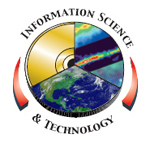
Please Note: The content on this page is not maintained after the colloquium event is completed. As such, some links may no longer be functional.
John Donohue
A Machine Learning Framework for Space Mission Situational Awareness
Wednesday, April 17, 2019
Building 34 Room W150- 11:00 AM
(Cookies at 10:30 AM)
The NOAA GOES-R Advanced Baseline Imager (ABI) is a new generation of complex science instruments designed for weather science. The ABI implements 7000+ operational sensors, more than several hundred times more sensors that its predecessors (e.g. GOES-N mission), creating a Big-Data challenge for sensor calibration and failure detection. Under the Goddard/SES-II contract, Dr. Zhenping Li designed and implemented Machine Learning algorithms to determine which of the ABI sensors require calibration or are failing (approaching or at saturation) in near real-time.
A machine learning (ML) framework has been developed for space mission situational awareness that enables anomaly detection, dynamic data filtering and sensor data quality assessment. The ML framework forgoes simple monitoring for high and low telemetry limits, to instead algorithmically remove variations induced by the cyclical behavior of the orbital environment. The ML framework covers four areas; an ML architecture model, ML algorithms and formulas for satellite datasets, a scalable and extensible ML platform, and the ML application portfolio. The ML architecture model defines how a ML system interacts with space and ground assets, ML functionalities, the interfaces among different ML processes, and the ML framework operational concept. ML algorithms and formulas include data representation, data training, anomaly detection and characterization, and the creation of actionable information for mission enterprise situational awareness. The ML platform is a software implementation of an ML architecture model that addresses the challenges of ML solutions in operational environments. The ML application portfolio focuses the applications of the ML framework on the health and safety of satellites and onboard instruments with differing orbital characteristics. The Advanced Intelligent Monitoring System (AIMS) implements the ML platform to provide a common infrastructure and services, while ML algorithms are treated as plug-and-play components. Application of the ML framework to Geostationary Environment Operational Satellite (GOES) instrument data, as well as health and safety data for the Suomi National Polar-orbiting Partnership (NPP), are presented showing that the ML framework brings fundamentally improved insight into space situational awareness for space missions. The ML approach enables early anomaly detection, rapid anomaly response, and significant improvements in system resiliency.
John Donohue joined ASRC Federal in 2016 after a 32 year career at NASA/Goddard Space Flight Center. His career included supporting Goddard missions within the Engineering Directorate as a computer engineer and systems engineer; and then as a leader/manager within the Directorate. As a senior executive, he served as the Division Chief of the Software Engineering Division and as the Goddard Deputy Chief Information Officer. At ASRC Federal he serves as a program/project manager and senior engineering analyst. He holds a Bachelor’s of Science in Electrical Engineering from the University of Maryland, and a Master’s of Engineering Management from the George Washington University.
IS&T Colloquium Committee Host:Dr. Daniel Duffy
Sign language interpreter upon request: 301-286-7348
Request future announcements: ist-colloq-subscribe@lists.nasa.go
